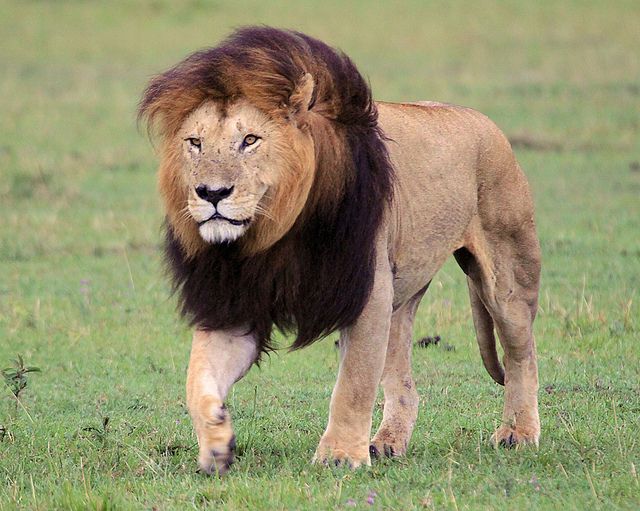
Lions are the only big cats with manes, and these flowing crowns aren’t just for show—they carry real meaning. Scientists and observers have long noticed that a lion’s mane can vary in color, length, and fullness, and those differences reveal important information about the lion’s age, health, social standing, and even genetics.
Here’s a quick guide to what those variations in a lion’s mane might mean:
Q: What does the color of a lion’s mane indicate?
A: Mane color can range from light blond to deep black—and it’s more than just hair dye from the savanna!
- Dark manes: Often found on mature, dominant males. Darker manes signal:
- Higher testosterone levels
- Better physical condition
- Greater success in battles and mating
- Lighter manes: May indicate:
- Younger males or subadults
- Lions in poor health or under environmental stress (like drought)
- Genetic variation
Fun fact: Lionesses are known to prefer males with darker manes, associating them with strength and reproductive fitness.
Q: What does the thickness or length of a lion’s mane tell us?
A: Mane size is another clue about a lion’s life stage and health.
- Thick, full manes: Usually found on:
- Prime-age adult males (around 5–10 years old)
- Lions in good nutrition and physical condition
- Short or patchy manes:
- Young lions just starting to grow their manes (usually after age 2)
- Older lions whose manes have thinned with age
- Individuals under stress from illness, injury, or poor diet
Q: Can the environment affect a lion’s mane?
A: Yes! Mane growth and color are influenced by temperature and climate:
- Lions living in hotter climates (like Tsavo in Kenya) often have shorter, lighter manes or even appear maneless. This helps them stay cool.
- Lions in cooler or higher-elevation areas tend to grow thicker, darker manes.
Researchers have shown that mane thickness can be a thermal burden, so in hot regions, a heavy mane might do more harm than good.
Q: Are manes always inherited from their fathers?
A: Genetics do play a role, but it’s not as simple as copying dad’s look. Mane development is influenced by a mix of:
- Genetic traits
- Hormone levels (especially testosterone)
- Nutrition and physical stress
- Social dominance
For instance, a young male may not grow a full mane if he’s injured, underfed, or subordinate—even if his genes suggest he could.
Q: Do manes help protect lions in fights?
A: It’s widely believed that manes provide protection during male-on-male combat:
- The thick fur cushions the neck and throat, which are frequent targets in fights.
- Males with larger manes are sometimes less likely to be challenged, as their appearance suggests strength and dominance.
So the mane acts both as armor and a warning sign—a bit like a lion’s battle flag.
Q: Why are some lions completely maneless?
A: A few populations have males with little to no manes at all. This could be due to:
- Extreme heat (as in parts of Tsavo)
- Hormonal imbalances
- Genetic factors unique to certain lion populations
Maneless lions aren’t necessarily weaker—but they may face fewer mating opportunities, especially if lionesses use mane size as a cue for choosing partners.
Q: Do some lionesses have manes?
A: Yes, though it’s rare. Some lionesses do grow manes, and it’s a fascinating phenomenon. These maned females have been observed most notably in the Okavango Delta in Botswana, and researchers believe the condition may be linked to hormonal imbalances, specifically elevated testosterone levels.
Key facts:
- These lionesses often exhibit more male-like behavior, such as roaring more frequently or attempting to mount other lions.
- Despite their appearance, most are not fertile, which supports the idea that high testosterone may interfere with reproduction.
- The trait does not appear to be inherited or widespread—it’s typically limited to one or two individuals in a given pride.
While they might look like young males at a glance, careful observation reveals that these lionesses still take on typical female roles within the pride, such as hunting and social bonding.
Fun fact: Maned lionesses challenge our assumptions about gender and appearance in the animal world—and offer scientists valuable insights into lion physiology and social structure.
Final Thoughts
A lion’s mane is a status symbol, a social signal, and a survival tool all wrapped into one. By looking closely at the color, size, and condition of a mane, you can learn a lot about a lion’s life story—from his strength and rank to his age and environment.
Have more lion questions? Feel free to ask!
Disclaimer: This blog post is for edutainment purposes only and may not be entirely accurate.






